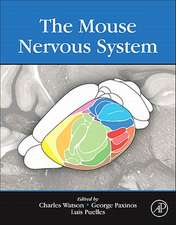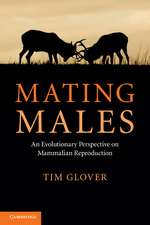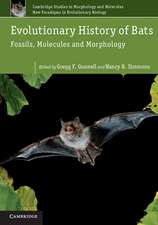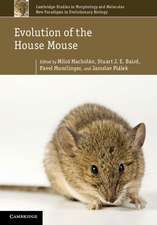Mammalian Thermogenesis
Editat de Lucien Girardieren Limba Engleză Paperback – 22 ian 2012
Preț: 392.21 lei
Nou
Puncte Express: 588
Preț estimativ în valută:
75.05€ • 78.78$ • 62.29£
75.05€ • 78.78$ • 62.29£
Carte tipărită la comandă
Livrare economică 11-25 aprilie
Preluare comenzi: 021 569.72.76
Specificații
ISBN-13: 9789401160346
ISBN-10: 9401160341
Pagini: 368
Ilustrații: VIII, 360 p.
Dimensiuni: 155 x 235 x 19 mm
Greutate: 0.51 kg
Ediția:Softcover reprint of the original 1st ed. 1983
Editura: SPRINGER NETHERLANDS
Colecția Springer
Locul publicării:Dordrecht, Netherlands
ISBN-10: 9401160341
Pagini: 368
Ilustrații: VIII, 360 p.
Dimensiuni: 155 x 235 x 19 mm
Greutate: 0.51 kg
Ediția:Softcover reprint of the original 1st ed. 1983
Editura: SPRINGER NETHERLANDS
Colecția Springer
Locul publicării:Dordrecht, Netherlands
Public țintă
ResearchCuprins
1 Mammalian Thermogenesis: An Introduction.- 2 Cellular Mechanisms of Heat Dissipation.- 2.1 Introduction.- 2.2 The thermodynamics of heat dissipation.- 2.3 Extra-mitochondrial ATP-hydrolysing mechanisms: general considerations.- 2.4 The status of ATP-hydrolysing mechanisms in brown fat.- 2.5 Mitochondrial dissipatory mechanisms: general considerations.- 2.6 The proton short-circuit of brown-fat mitochondria.- 2.7 The molecular basis for the adaptive cold- and diet-induced increase in brown-fat thermogenic capacity.- 2.8 The acute regulation of the proton short-circuit in brown-fat mitochondria.- 2.9 Conclusions.- References.- 3 Brown Fat: An Energy Dissipating Tissue.- 3.1 Introduction.- 3.2 The survival value of an energy dissipator.- 3.3 Anatomy.- 3.4 The capacity for heat production.- 3.5 Evidence for a concerted regulation between substrate supply and respiration rate.- 3.6 Tissue blood flow.- 3.7 The adaptive response to cold exposure.- 3.8 The acute thermogenic response.- 3.9 Alpha- and beta-adrenergic mediated membrane potential changes and metabolism.- 3.10 Sodium pump and thermogenesis.- 3.11 Control of brown-fat thermogenesis.- References.- 4 Autonomic Regulation of Thermogenesis.- 4.1 Introduction.- 4.2 Cold exposure.- 4.3 Diet.- 4.4 Summary and conclusions.- References.- 5 Thyroid Hormones and Thermogenesis.- 5.1 Introduction.- 5.2 Role of thyroid hormones in thermogenesis.- 5.3 Summary.- References.- 6 Energetics of Maintenance and Growth.- 6.1 Measurement of energy exchange.- 6.2 The energy cost of maintenance and fattening.- 6.3 Food intake and heat production.- 6.4 Eating and rumination.- 6.5 Efficiency of utilization of absorbed nutrients.- 6.6 Regulatory dietary-induced thermogenesis.- 6.7 Body size and heat production.- 6.8 The energetics of growth.-6.9 Conclusions.- References.- 7 Diet-Induced Thermogenesis.- 7.1 Introduction.- 7.2 Force-feeding and diet-induced thermogenesis.- 7.3 Voluntary hyperphagia and diet-induced thermogenesis.- 7.4 Mechanism of diet-induced thermogenesis.- 7.5 Other factors affecting diet-induced thermogenesis.- 7.6 Reduced thermogenesis.- 7.7 Summary.- References.- 8 Thermogenesis and Obesity.- 8.1 Introduction.- 8.2 Energy balance in genetically obese rodents.- 8.3 Mechanisms of heat production.- 8.4 Thermogenesis in man.- 8.5 Concluding comments.- References.- 9 Hypermetabolism in Trauma.- 9.1 Introduction.- 9.2 Afferent mediators of metabolic alterations.- 9.3 Neuroendocrine responses.- 9.4 Metabolic responses.- 9.5 Cardiovascular responses.- 9.6 Thermoregulatory response.- 9.7 Treatment.- 9.8 Summary.- References.- 10 Thermogenesis and Fever.- 10.1 Temperature regulation as a reflex.- 10.2 The biology of fever.- 10.3 The biology of malignant hyperthermia.- References.- 11 Pharmacology of Thermogenesis.- 11.1 Introduction.- 11.2 Central control of thermogenesis.- 11.3 Neural control of shivering and non-shivering thermogenesis.- 11.4 Receptors mediating thermogenic responses in brown adipose tissue.- 11.5 Intracellular mediators of the acute, subacute and chronic effects of sympathetic stimulation.- 11.6 Impact of various pharmacological agents on thermogenesis.- 11.7 Hormonal control of thermogenesis.- 11.8 A rationale for selecting thermogenic agents.- References.










